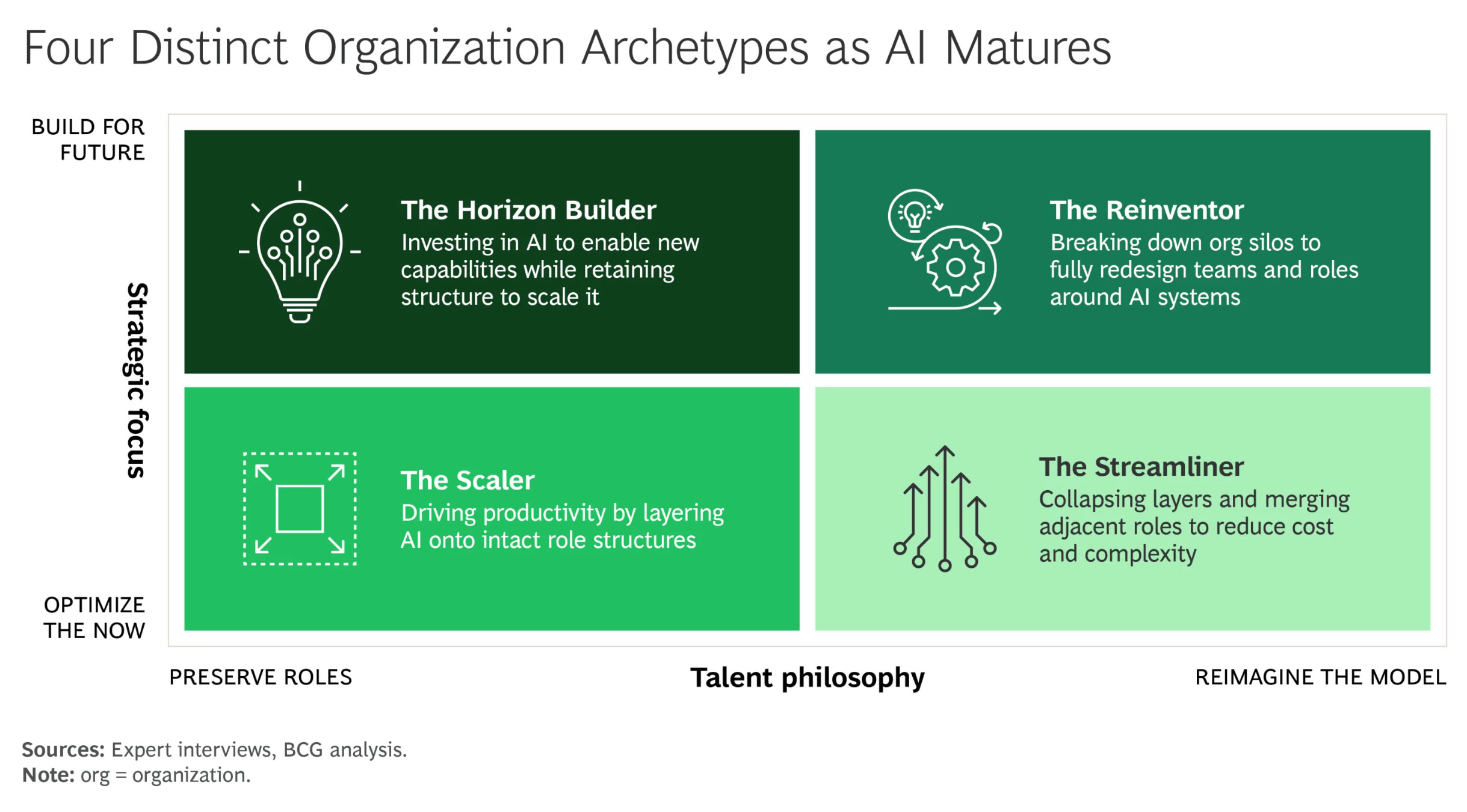AI Adoption Isn’t About Tools — It’s About People, Systems and applied Intelligence

For years, large consulting firms have treated digital transformation as a technology problem.But if the recent wave of reports from firms like Boston Consulting Group and McKinsey show anything, it’s this: they’re finally catching up to what we’ve been practicing for more than a decade
AI Adoption Isn’t About Tools — It’s About People, Systems, and the Intelligence Between Them
For years, large consulting firms have treated digital transformation as a technology problem.
But if the recent wave of reports from firms like Boston Consulting Group and McKinsey show anything, it’s this: they’re finally catching up to what we’ve been practicing for more than a decade — that true transformation is human before it’s technical.
At Futureneers, we’ve spent over 15 years helping organizations introduce and scale disruptive technologies — from complex data-driven platforms to agentic AI systems. Our work has reached over 100 million users across industries. And through every project, one truth has remained constant: tools don’t transform organizations; people do.
The Tool Fallacy
In every major wave of innovation — from the early internet to SaaS to AI — the same mistake repeats:
companies focus on the tool, not the system.
They buy software, roll it out fast, and expect magic.
But without an orchestration of human capability, organizational culture, and strategic integration, these investments evaporate.
The problem isn’t lack of innovation. It’s lack of integration.
The Human–System Equation
We believe in what we call systemic intelligence — the idea that technology only creates value when it becomes part of a living, breathing ecosystem of human expertise, workflows, and data.
Our approach to AI adoption is built on three key pillars:
- Human-first orchestration — empowering people to understand, shape, and evolve AI use cases.
- Organizational alignment — ensuring AI systems integrate with business goals, not just automate isolated tasks.
- Agentic enablement — building AI agents that act as knowledgeable collaborators, not as pseudo-employees.
-
Why We Don’t Call AI Agents “Employees”
There’s a growing trend — especially among corporate futurists and media — to anthropomorphize AI systems: “digital coworkers”, “AI teammates”, even “virtual employees.”
We strongly reject that language.
It’s misleading and, frankly, dehumanizing.
When you call an AI an employee, you blur the line between human agency and artificial function. You shift the narrative from empowering humans through technology to replacing humans with technology. That’s not transformation — that’s abdication.
AI agents are not employees.
They are integrated, intelligent systems — designed to handle information, orchestrate workflows, and enable humans to make better, faster, and more creative decisions.
We see AI as a cognitive infrastructure: it holds knowledge, learns context, and supports teams from within. The human remains at the center — as the thinker, the strategist, the ethical compass.
When Consulting Giants Catch Up
It’s interesting to watch how the large consulting firms are now shifting their narratives.
Reports like “AI Is Outpacing Your Workforce Strategy — Are You Ready?” (BCG, 2025) sound familiar because they echo what we’ve been doing for years: building AI-empowered workforces, not just AI-driven processes.
But theory and practice are two very different things.
While many still focus on change management slide decks and capability frameworks, we’ve been busy designing and deploying agentic enterprise systems that work in real teams — in marketing, operations, customer service, sustainability, and production.
Our clients don’t get “tools.”
They get living systems that integrate knowledge, data, and collaboration across their organization — designed to evolve alongside their people.
The Future of AI Adoption: Orchestration, Not Automation
The future belongs to organizations that understand the interplay between human intelligence and artificial intelligence.
It’s not about efficiency alone — it’s about creating room for creativity, collaboration, and strategic depth.
At Futureneers, we see this every day: when people are freed from repetitive, cognitive overhead, they don’t become less relevant — they become more human. They think bigger. They innovate. They connect.
That’s the kind of transformation AI should enable.
Conclusion
The age of “AI tools” is ending. The age of AI systems — integrated, adaptive, and deeply human-centric — has begun.
Large consulting firms are beginning to talk about this shift.
We’re already building it.
At Futureneers, our mission is to design agentic ecosystems where AI doesn’t replace human intelligence — it expands it.
If you want to see how this approach works in practice, join our upcoming webinar on AI Orchestration and the Future of Workforce Enablement — where we’ll show how to embed AI sustainably, systemically, and human-first
By adopting a proactive and positive approach to creating the future, we can work to shape a better tomorrow for all. This sums up our motivation as Futureneers and we will share more of our experience with system change through Futureneering in different contexts on this blog.



